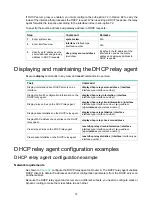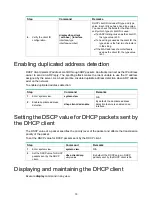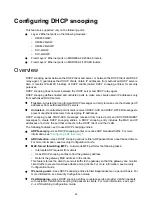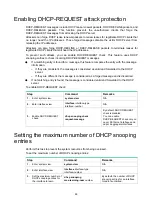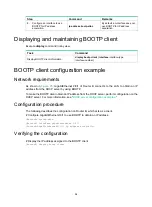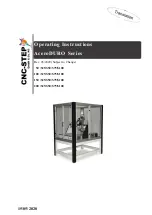
79
Step Command
Remarks
4.
Verify the client ID
configuration.
display dhcp client
[
verbose
] [
interface
interface-type
interface-number
]
DHCP client ID includes ID type and type
value. Each ID type has a fixed type value.
You can check the fields for the client ID to
verify which type of client ID is used:
•
If an ASCII string is used as the client ID,
the type value is 00.
•
If a hex string is used as the client ID, the
type value is the first two characters
in the string.
•
If the MAC address of an interface is
used as the client ID, the type value
is 01.
Enabling duplicated address detection
DHCP client detects IP address conflict through ARP packets. An attacker can act as the IP address
owner to send an ARP reply. The spoofing attack makes the client unable to use the IP address
assigned by the server. As a best practice, disable duplicate address detection when ARP attacks
exist on the network.
To enable duplicated address detection:
Step Command
Remarks
1.
Enter system view.
system-view
N/A
2.
Enable duplicate address
detection.
dhcp client dad enable
By default, the duplicate address
detection feature is enabled on an
interface.
Setting the DSCP value for DHCP packets sent by
the DHCP client
The DSCP value of a packet specifies the priority level of the packet and affects the transmission
priority of the packet.
To set the DSCP value for DHCP packets sent by the DHCP client:
Step Command
Remarks
1.
Enter system view.
system-view
N/A
2.
Set the DSCP value for DHCP
packets sent by the DHCP
client.
dhcp client dscp
dscp-value
By default, the DSCP value in DHCP
packets sent by the DHCP client is 56.
Displaying and maintaining the DHCP client
Execute
display
command in any view.











